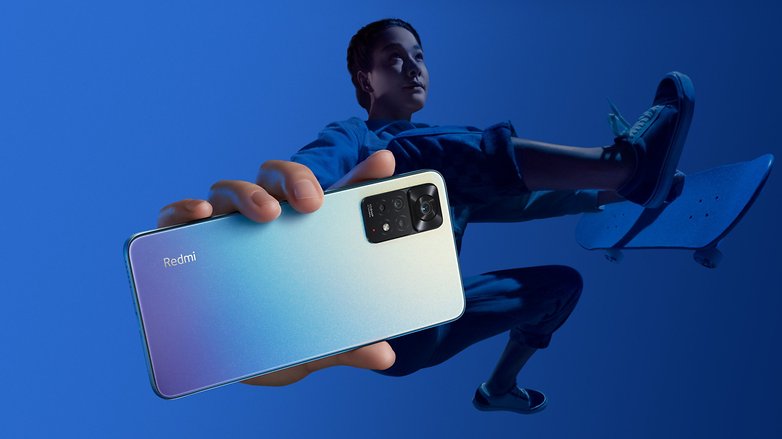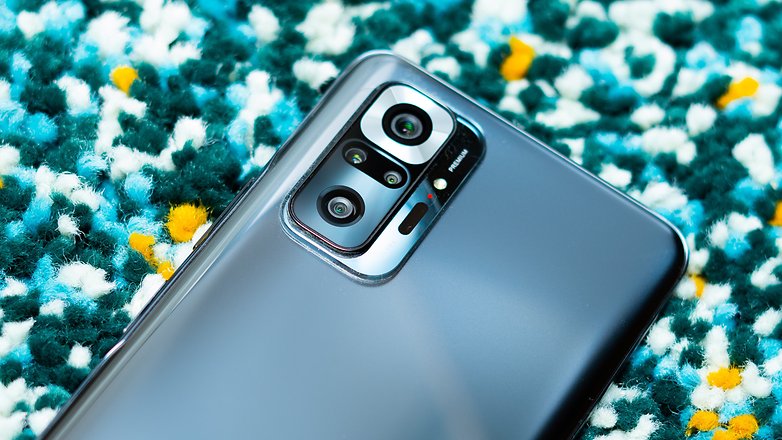The middle-class king has two sons who want to dethrone him! The Redmi Note 11 Pro and Redmi Note 11 Pro 5G offer some improvements. But is the upgrade worth it if you’re using the Note 10 Pro? We offer you a first comparison of the data sheets.
In 2021, Xiaomi broke new records with the Redmi Note 10 Pro. For the first time there was a device in the smartphone middle class that offered both an AMOLED display with 120 Hertz and a camera with 108 megapixels. Almost exactly one year later, the successor is available – the Redmi Note 11 Pro including a version with a 5G SoC. Even if we don’t have the devices in the editorial office yet, we can compare the data sheets. Let’s start with a table:
| 2022 model | 2022 model with 5G | 2021 model | ||
|---|---|---|---|---|
| product | Xiaomi Redmi Note 10 Pro | |||
| Illustration |  | |||
| screen | 6.67″ AMOLED display with FHD+ resolution | 120 Hertz refresh rate | 6.67″ AMOLED display with FHD+ resolution | 120 Hertz refresh rate | 6.67″ AMOLED display with FHD+ resolution | 120 Hertz refresh rate | |
| Mass weight | 164.19 x 76.1 x 8.12mm | 202 grams | 164.19 x 76.1 x 8.12mm | 202 grams | 164 x 86.5 x 8.3mm | 193 grams | |
| IP certification | IP53 | IP53 | IP53 | |
| power | MediaTek Helio G96 | 6/8GB LPDDR4X RAM | 64/128GB UFS 2.2 storage | Qualcomm Snapdragon 695 | 6/8GB LPDDR4X RAM | 64/128GB UFS 2.2 storage | Qualcomm Snapdragon 732G | 6/8GB LPDDR4X RAM | 64/128GB UFS 2.2 storage | |
| Expandable storage? | Yes, up to 1TB | Yes, up to 1TB | Yes, up to 1TB | |
| connectivity | LTE, Bluetooth 5.1, NFC, IR blaster, jack connection | 5G, Bluetooth 5.1, NFC, IR blaster, jack connection | LTE, Bluetooth 5.1, NFC, IR blaster, jack connection | |
| cameras | Main: 108MP | f/1.9 ultra wide angle: 8 MP | f/2.2 macro: 2 MP | f/2.4 Selfie: 16MP / f/2.4 | Main: 108MP | f/1.9 ultra wide angle: 8 MP | f/2.2 macro: 2 MP | f/2.4 Selfie: 16MP / f/2.4 | Main: 108MP | f/1.9 ultra wide angle: 8 MP | f/2.2 macro: 2 MP | f/2.4 Selfie: 16MP / f/2.4 | |
| battery pack | 5,000mAh | 67 watt quick charging | 5,000mAh | 67 watt quick charging | 5,020mAh | 33 watt quick charging | |
| Audio | dual speaker | dual speaker | dual speaker | |
| price | Starting at $299 | Starting at $329 | From 279 euros (RRP) | |
| Review | – | – | To test on NextPit |
notice: This comparison is based on the data sheets of the devices. A hands-on comparison will follow at a later date
Buy Redmi Note 10 Pro on Amazon
I have already marked the advantages in bold for you. To avoid confusion below, I’m treating the new Note 11 devices as One Device. After all, they offer the same features, except for the 5G-capable SoC in the 5G model.
Redmi Note 11 Pro vs. Note 10 Pro: display and body
Let’s start with the most obvious: nothing has changed on the display. The AMOLED panel still measures 6.67 inches, has a resolution of 2,400 x 1,080 pixels and displays content with a high 120 Hertz refresh rate. However, the average brightness has increased a bit to 700 nits and the bezels around the screen have shrunk a bit. As a result, the Note 11 Pro measures 163.7 x 76.2 x 8.3 millimeters while its predecessor was 164 x 86.5 x 8.3 millimeters.

The back of the Note 10 Pro was still quite shiny. / © NextPit
The new model is a little heavier, now weighing 207 grams and looking a little different from the back. That’s because Xiaomi’s finally opted for a matte back that almost looks like a metal back in the first few pictures. But that’s not true, because Xiaomi still relies on polycarbonate or in plain English: plastic. Stereo speakers are still on board, the fingerprint sensor is still in the power button and the 3.5 millimeter jack connection should not be missing in the Pro model.
Redmi Note 11 Pro vs Note 10 Pro: performance and connectivity
While we don’t get any relevant changes to the display, Xiaomi has fixed a major shortcoming of the predecessor. The Note 11 Pro is available in a new 5G version and Xiaomi is realizing this with the Snapdragon 695. It is still a very new mid-range SoC that will later have to prove itself in the test. A 6-nanometer production and clocks of up to 2.2 gigahertz look promising. In addition, Xiaomi pairs the CPU with 6 or 8 gigabytes of LPDDR4X RAM and either 64 or 128 gigabytes of internal UFS 2.2 memory.

The Redmi Note 11 Pro (5G) has a slightly different look. / © Xiaomi
A MediaTek Helio G96 works in the LTE variant of the Redmi 11 and we can compare it quite well with the Snapdragon 732 G of the previous model. The MediaTek SoC came later, but uses a larger manufacturing process at 12 nanometers. The clock of the high-performance cores is also a little lower, while the six other cores clock higher. It is therefore very exciting to see which smartphone will ultimately bring a performance advantage. We will find out after the test report at the latest.
Other connectivity hasn’t really improved. You already know that there is a 5G variant – Bluetooth 5.1 and WiFi 5 have remained identical. In addition, the Chinese manufacturer is one of the few to stick with an IR blaster and also leaves the NFC chip where it belongs.
Redmi Note 11 Pro vs Note 10 Pro: cameras

Offered one more camera: The Note 10 Pro. / © NextPit
It looks pretty sobering with the cameras of the successor model. Instead of improvements, there is only the insight that nobody needs sensors for depth information. Because Xiaomi omits the depth camera in the Redmi Note 11 Pro (5G), leaving the 108-megapixel main camera with f/1.9, the ultra-wide-angle camera with 8 megapixels and a 120-degree field of view, and the telephoto camera with 2 megapixels.
The fact that Xiaomi doesn’t offer anything new here means that you don’t have to upgrade from the previous model. According to the data sheet, those who hoped for innovations will get nothing. However, the test may reveal a plus in image quality due to more sophisticated software processing.
Redmi Note 11 Pro vs Note 10 Pro: Software
Speaking of which, the Note 11 Pro is factory-equipped with MIUI 13. Unfortunately, those who hoped for Android 12 were wrong. Because the new operating system is still based on Android 11. The update promise that has not yet been communicated starts with Android 11, which is a bit of a shame. Since the Redmi Note 10 Pro will also get an update to MIUI 13, there are no differences to report in the software.
Redmi Note 11 Pro vs. Note 10 Pro: battery and quick charging
But what are the reasons for the new model? Pudel’s proverbial core lies in quick charging, because that’s where Xiaomi steps on the gas. Although you have to do without the previously speculated 120 watt fast charging of the Xiaomi 11T Pro, there is a fast charging function with 67 watts. This should charge the 5,000 mAh battery of the Redmi Note 11 Pro (5G) to half within 15 minutes.

Quick charging works faster with the successor model. / © Xiaomi
With the previous model, the Redmi Note 10 Pro, it was even slower. The battery with about the same capacity charges with 33 watts and here 50 percent is reached in just under 30 minutes. However, there is no wireless charging in either the old or the new model.
Redmi Note 11 Pro vs Note 10 Pro: Pricing and Availability
Xiaomi’s Redmi Note 10 Pro made headlines in the tech press mainly because of one property: the aggressive pricing policy, which started at just 279.90 for the model with 64 gigabytes of internal memory. According to the press conference, prices for the successor start at $299 and $329 for the 5G version. We do not yet know the euro prices or the costs for memory upgrades.
Conclusion: Is the upgrade from the previous model worth it?
If you read this article on a Redmi Note 10 Pro, you don’t need to plan any money for an upgrade at first glance. Xiaomi already offered features in the middle class last year that can hardly be surpassed. This will be confirmed in 2021 by the fact that the manufacturer itself can hardly find any features that still need to be integrated. But with faster quick charging and 5G compatibility, Xiaomi has improved exactly what could still be improved.
If you are switching from an older model or buying a smartphone for the first time, you should use the Redmi Note 11 (5G). Because experience has shown that fast quick charging is extremely pleasant in everyday life and if your contract supports 5G, you can surf a little in the future. We will clarify everything else when the new Xiaomi devices are in the editorial office for testing.
